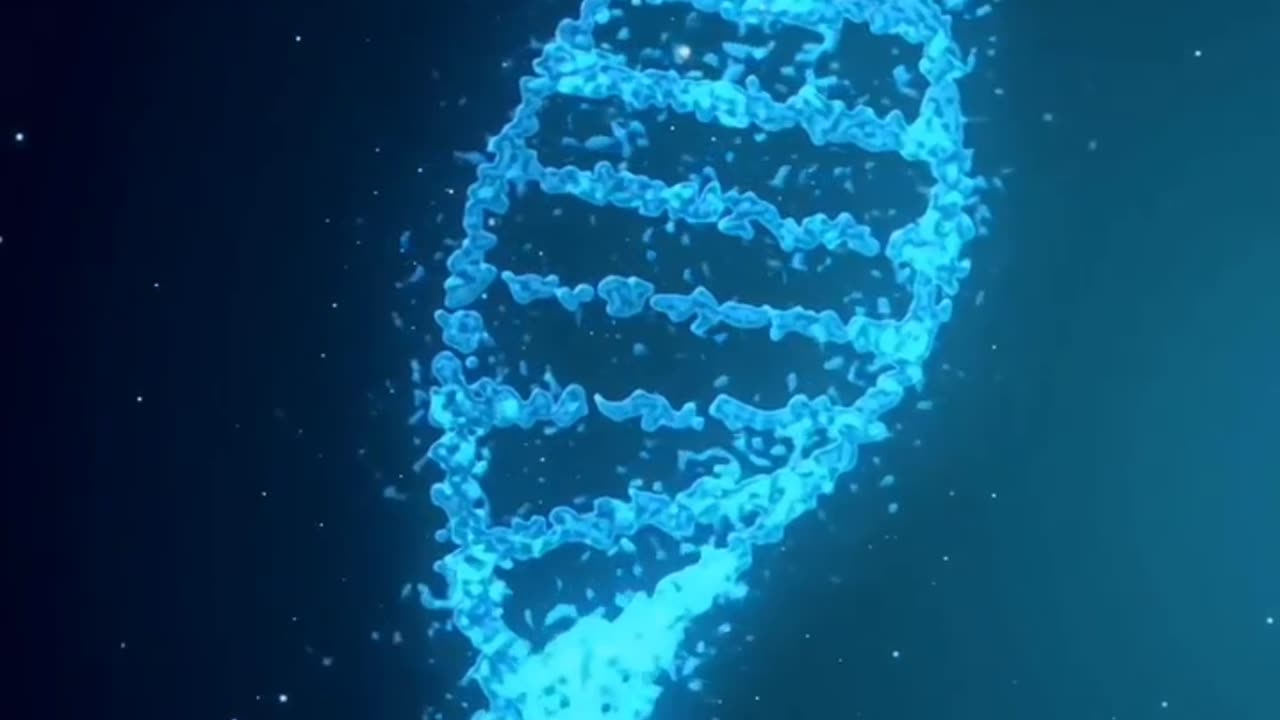Premium Only Content

DNA working process
The DNA (deoxyribonucleic acid) working process is fundamental to all living organisms, serving as the blueprint for life. DNA contains the genetic instructions necessary for the growth, development, functioning, and reproduction of organisms. Here's an overview of how DNA works:
DNA Structure: DNA is composed of two long strands that coil around each other to form a double helix. Each strand consists of a backbone made of sugar and phosphate molecules, with nitrogenous bases extending inward from each strand. The nitrogenous bases adenine (A), thymine (T), cytosine (C), and guanine (G) form complementary base pairs: A pairs with T, and C pairs with G.
Replication: Before a cell divides, its DNA must be replicated to ensure that each daughter cell receives a complete set of genetic information. During replication, the DNA double helix unwinds, and the enzyme DNA polymerase synthesizes new strands complementary to each of the original strands. This results in two identical DNA molecules, each containing one original strand and one newly synthesized strand.
Transcription: The process of transcription involves copying a segment of DNA into a molecule of messenger RNA (mRNA). This process occurs in the cell nucleus, where the DNA resides. During transcription, the DNA double helix unwinds, and RNA polymerase binds to the DNA strand. RNA polymerase then catalyzes the synthesis of mRNA by adding complementary RNA nucleotides, following the base-pairing rules (except that uracil (U) replaces thymine (T) in RNA). Once transcription is complete, the mRNA molecule carries the genetic information from the DNA to the ribosomes in the cytoplasm.
Translation: Translation is the process by which the genetic information carried by mRNA is used to synthesize proteins. It takes place in the ribosomes, which are cellular organelles composed of RNA and proteins. During translation, transfer RNA (tRNA) molecules bring specific amino acids to the ribosome, where they are joined together in a specific order dictated by the sequence of codons (three-nucleotide sequences) on the mRNA molecule. As the ribosome moves along the mRNA strand, it reads the codons and assembles the corresponding amino acids into a polypeptide chain. This chain folds into a functional protein, based on its amino acid sequence.
Through the processes of replication, transcription, and translation, DNA serves as the central molecule in the flow of genetic information within cells, ultimately determining the characteristics and functions of living organisms. #science #sciencefacts #astronomy #space #facts #fact #fyp #foryou #reels #viral
-
 9:11
9:11
MattMorseTV
16 hours ago $17.03 earnedVance just DROPPED the HAMMER.
130K56 -
 10:16
10:16
GritsGG
17 hours agoBEST Controller Settings for Warzone! Rank 1 Player's Settings!
16.4K2 -
 2:13:30
2:13:30
Side Scrollers Podcast
21 hours agoUK Introduces MANDATORY Digital ID + Dallas ICE Shooting BLAMED on Gaming + More | Side Scrollers
144K22 -
 10:34
10:34
The Pascal Show
16 hours ago $5.44 earnedFOOTAGE REVEALED! Images Of Celeste Rivas Exposed Before Her Disappearance From Home Running To D4vd
21.5K2 -
 LIVE
LIVE
Lofi Girl
2 years agoSynthwave Radio 🌌 - beats to chill/game to
316 watching -
 4:23:47
4:23:47
MissesMaam
11 hours ago*Spicy* Friend Friday with Mally_Mouse and Friends!! 💚✨
308K19 -
 2:05:09
2:05:09
TimcastIRL
12 hours agoRIOTS Leftist ATTACK ICE, Tear Gas Deployed, Feds Ordered To IGNORE CA Law, CIVIL WAR! | Timcast IRL
346K308 -
 15:57
15:57
Robbi On The Record
1 day ago $8.26 earnedTranshumanism: Are Humans Becoming Obsolete? Neuralink & CRISPR explained
59.2K23 -
 2:22:21
2:22:21
TheSaltyCracker
12 hours agoICE Smashing Antifa ReeEEStream 9-26-25
138K209 -
 7:47:28
7:47:28
SpartakusLIVE
13 hours ago#1 HERO of the PEOPLE || Ending the Week with FUN, WINS, and LAUGHS
93.5K